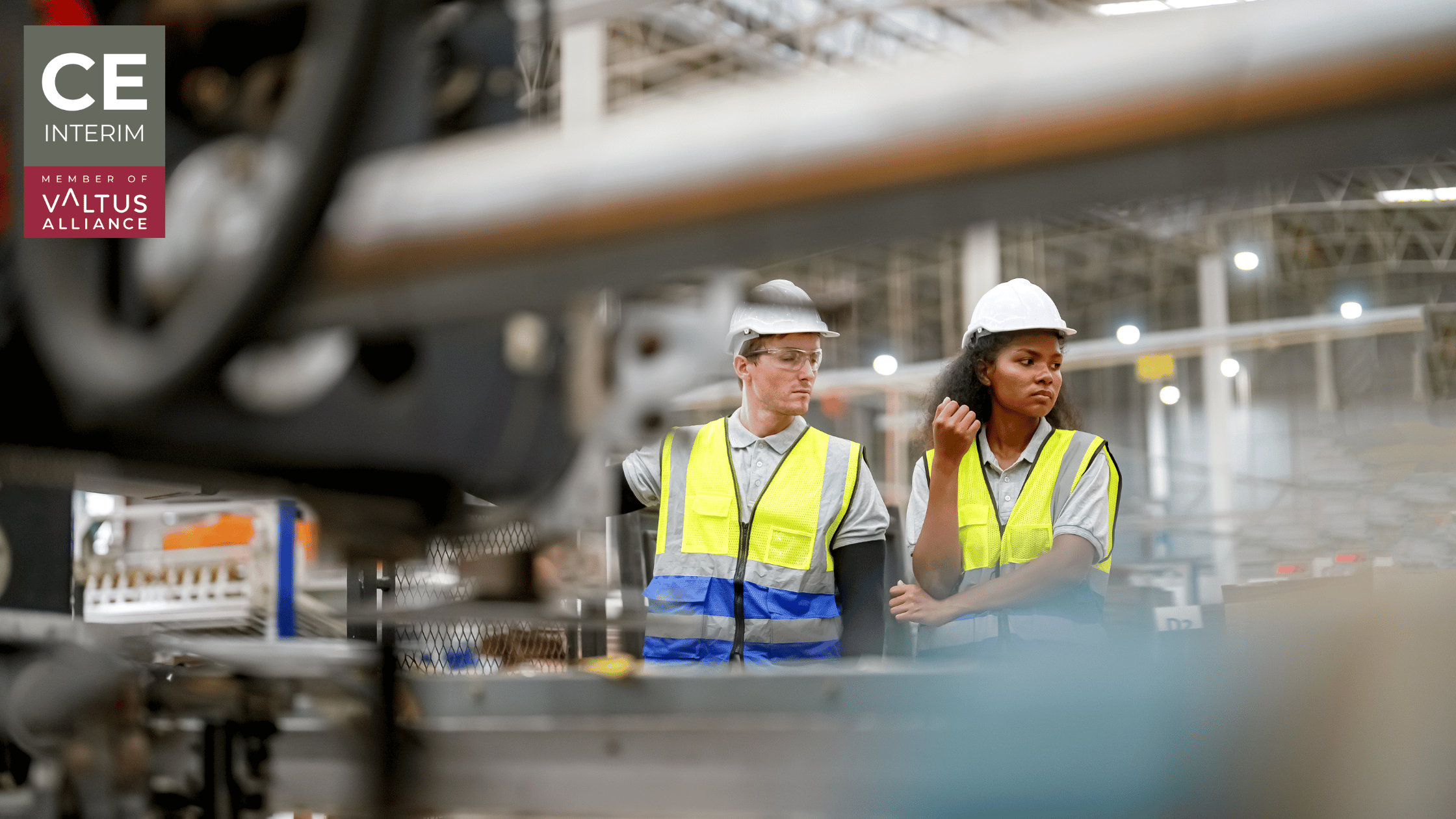Nemáte dost času na přečtení celého článku? Poslechněte si shrnutí ve 2 minutách.
V zasedacích místnostech, na ministerstvech a v průmyslových uskupeních se stále opakuje jedna věta: reindustrializace. Ambice je jasná - vrátit výrobu domů, zajistit dodavatelské řetězce a snížit závislost na zahraničí. Něco však chybí.
Vize bez rychlosti se stala novým německým dilematem.
Vedoucí pracovníci se shodnou na cílech. Mnoho firem však místo toho, aby se pohnulo kupředu, uvízlo v předschváleném stavu, připravuje plány transformace a čeká, až jim politika uvolní cestu.
Förderprogramme Únava
Německo v uplynulém desetiletí vybudovalo jeden z nejpropracovanějších dotačních ekosystémů na světě. Podpůrné programy existují téměř pro všechny druhy průmyslových výzev - digitalizaci, automatizaci, zelenou energii, přemisťování, integraci umělé inteligence.
Přesto výsledky neodpovídají slibům.
Transformace je zpožděná, nikoliv urychlená. Podle nejnovější údaje z DIHK, 48% středně velkých průmyslových podniků oznámilo odložení klíčových modernizací z důvodu nejistota ohledně rámců financování.
Některé z nich dokonce čtvrtletně mění strategii tak, aby odpovídala dalšímu kolu dotací, a staví tak své operace na politických cyklech, nikoli na obchodních cílech.
Dotace tlumí bolest, ale málokdy vyvolávají smysluplné změny. A společnosti, které čekají na jistotu, často sledují, jak je příležitost míjí.
Co dělají rychlí stěhováci jinak
I. Globální posun případu
Naproti tomu mnoho globálních konkurentů se vydalo jinou cestou. Američtí polovodičoví giganti jako Intel a Micron spouštějí zařízení využívající umělou inteligenci ještě v době, kdy jsou povolení v pohybu. Polsko podle indexu 2025 Central Europe Manufacturing Index zkrátilo dobu přípravy továrny o téměř 40%.
Rozdíl? Léčí se rychlost jako strategie.
Provedení není zdržováno diskusí. Je řízeno naléhavostí - a koriguje se za pochodu.
II. Rychlost převyšuje jistotu
V dnešní době je zpoždění často dražší než chyba. Otřesy v dodavatelském řetězci, narušení umělé inteligence a rostoucí náklady na energie nečekají na vyřízení dokumentů.
Rychlost vytváří zpětnou vazbu. Zpětná vazba vytváří učení. A učení vytváří konkurenční výhodu. Největší průmyslová síla Německa - pečlivé inženýrství - se nyní musí spojit s rychlostí realizace.
Reindustrializace je otázkou realizace, nikoli politiky
I. Co je skutečnou hybnou silou
Většina německých výrobců již znát co dělat.
Zmapovali nové modely zásobování, nastínili plány chytrých továren a vyhodnotili digitální dvojčata. Mezi záměrem a akcí se však něco přerušuje.
Strategie existuje. PowerPointy existují. Co chybí, je doručení.
Předpokládá se, že transformace začíná, když se politika sladí. Ve skutečnosti však začíná, až když se tak stane.
II. Falešná bezpečnost politiky
Nová dotace může pomoci snížit investiční náklady, ale nevyřeší nedostatek pracovních sil, nezapojí umělou inteligenci do dílny ani neodstraní provozní zpoždění.
Nakonec je reindustrializace ne problém s financováním. Jde o hnutí vedení.
Jak mohou generální ředitelé vytvořit pohyb - bez čekání na schválení
I. Zmenšení rozdílu mezi pilotními projekty a zavedením do praxe
Namísto navrhování transformací v plném rozsahu začněte transformací jediná buňka, jediný pracovní postup, jediná linie rostlin..
Přistupujte k reindustrializaci jako k uvedení produktu na trh: spusťte jej rychle, proveďte obsedantní měření a rozšiřte to, co funguje. Mnoho německých firem by mohlo dosáhnout návratnosti investic do 90 dnů - pokud přestanou čekat na dokonalost politiky.
II. Proměňte bolestivé body ve strategické páky
- Využijte rostoucí náklady na energii k ospravedlnění automatizace procesů, nikoliv ke zmrazení nákladů.
- Využijte nedostatek pracovních sil k přepracování pracovních postupů, nikoli k přijímání nových zaměstnanců.
- Využijte nestálosti vývozu ke zkrácení dodavatelských řetězců, nikoli k naději na stabilitu.
Nejedná se o krize. Jsou to signály. A rychlost mění signály v akci.
Když musí rychlost přijít zvenčí
I. Prozatímní vedení výkonu jako most
Někdy není problém ve vizi - je to vnitřní šířka pásma. Vedoucí týmy jsou příliš angažované, transformační týmy nedostatečně výkonné a únava z projektů je vysoká.
V takových chvílích, dočasní vedoucí transformace nabídnout přemostění. Přicházejí s neutralitou, naléhavostí a soustředěním na realizaci - jsou schopni nastolit dynamiku bez institucionálního odporu.
CE Interim viděl, jak dodavatelé Mittelstandu zahájili pilotní projekty plně digitalizovaných továren s dočasnými provozními řediteli - zatímco stále čekají na odpovědi ohledně dotací. Nejsou to konzultanti - jsou to partneři pro realizaci.
II. Od zastavení k zahájení
Dodavatel automobilů první úrovně v Bavorsku, který byl ochromen požadavky na podávání zpráv ESG a nedostatkem pracovních sil, přijal dočasného ředitele programu. Za 10 týdnů spustili nový proces sledování materiálu řízený umělou inteligencí, uvolnili kapacitu 12% a stabilizovali spotřebu energie.
Jejich Förderantrag? Stále se přezkoumává.
Závěrečná reflexe: Dotace možná přijdou - ale čas nepočká
Průmyslová velikost Německa byla založena na technické přesnosti, metodickém plánování a dlouhodobé orientaci. Ty jsou stále cenné, ale už nestačí.
Dnešní konkurenční výhoda spočívá v rychlost provádění.
Reindustrializace nebude politikou povolena. Musí být vybudována zevnitř - rychleji, než přijde další porucha.
Cestu mohou podpořit dotace. Ale pouze rychlost může začít.
Jak by vypadala vaše průmyslová inovace, kdybyste nečekali na schválení?





